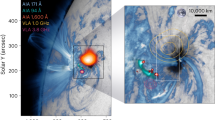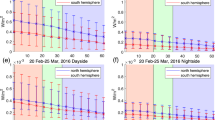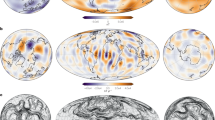Abstract
I HAVE read attentively the numerous letters which have appeared in your columns on this subject; but so far as I can discern it seems not to have occurred to any of your correspondents that the auroral force, whatever it may be, affects every kind of cloud as well as the cirrus. On June 15, 1870, at 9 A.M., I witnessed here as complete a display of auroral motions in the cirrus cloud as ever I beheld in a midnight sky; and from that date I dismissed in my own mind all doubt as to the identity of auroral force, whether seen by day affecting the cirrus cloud or appearing as streams and rays of light at night. On Thursday and Friday last I witnessed a configuration of cirro-stratus cloud, evidently the result of magnetic polarisation, which I have no hesitation in characterising as auroral. There were on Thursday two poles, both in the line of the magnetic meridian; but on Friday night, at nine o'clock, only one pole in the direction of the true meridian. The phenomenon to which I refer is of very frequent occurrence, especially before a track of fine warm weather; and without at present offering a theory on the subject of auroras, I venture to class polarisations of clouds, whether cirrus or not, as arising from the same cause as luminous aurora. The transverse or dia-magnetic lines are generally as wrell marked in cloud auroras, and it is an interesting task to watch the transformation of cirrus cloud from the meridional to the equatorial direction. I have also noted that when these auroral lines converge towards the magnetic pole, a steady barometer and fine weather ensue; but that when the transverse or equatorial lines predominate and continue long visible, rain soon follows. These transverse lines of cloud are always lower and seem to be dia-magnetic.
Similar content being viewed by others
Article PDF
Author information
Authors and Affiliations
Rights and permissions
About this article
Cite this article
Low, D. Day Auroras. Nature 4, 121 (1871). https://doi.org/10.1038/004121c0
Issue date:
DOI: https://doi.org/10.1038/004121c0



